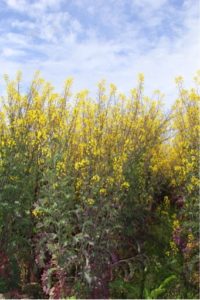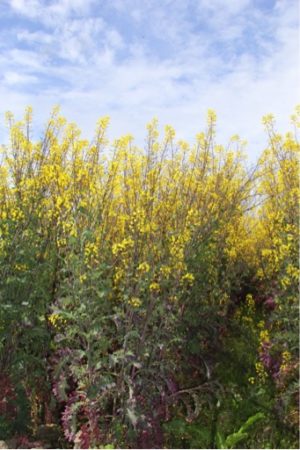Kale Seed Production: Quick Reference - Organic Seed Alliance

Kale Seed Production
Kale grows best if daytime and nighttime temperatures are moderate (60-75°F), but is more tolerant of heat than some other Brassicas. Kale can flower and set seed at temperatures up to 85°F. The cold hardiness of kale makes it particularly interesting to growers in the Intermountain West. Some Siberian varieties can survive below 14°F while most kales can tolerate 18-25°F. Lacinato types are the least tolerant of cold. To grow kale, fertile, well-balanced soils are best. Kales are self-incompatible and exclusively cross- pollinating. They are pollinated by insects. Isolation distances must take into account the presence of insect pollinators and distances of other nearby floral sources of compatible cultivated and wild species.
| Kale species | Common varieties | Will cross with |
| Brassica oleracea | Vates, Scotch curled, Lacinato | Broccoli, cabbage, cauliflower, Brussels sprouts, kohlrabi, collards |
| Brassica napus | Red Russian, True Siberian | Rutabaga |

Kale varieties need to be isolated from varieties or the same species by at least 2 miles in open terrains. Physical barriers (hills, woods, buildings, hedgerows) may reduce the isolation distance to 1 mile. Kale grown for seed production is typically started in mid-to-late summer. It grows vegetatively in the fall, vernalizes over the winter, and sets seed in the spring. Transplanting 4-6 week old plants grown in a nursery bed or greenhouse is recommended. Space plants 18-24 inches apart in rows that are 30-40 inches apart. When seed pods (silques) turn a light tan or buff color they are ready to harvest.
Cut whole plants at or near ground level, windrow, and dry the plants for 1-2 weeks in the field. If it rains, finish drying them in a well-ventilated hoop house or greenhouse. Thresh by rubbing the plants by hand, breaking the siliques open with threshing sticks, or walking or driving over a pile or windrow or plants. Scalp with a pitchfork or screen with a large gauge screen (such as a milk or bulb crate) to remove the bulk of the chaff. Use a combination of winnowing and screening to finish cleaning seed. Round-holed screens with holes larger than the seed remove larger debris, screens with small holes can be used to remove fine debris. An air separator or spiral separator are both useful for final cleaning.
Selection and Variety Improvement
Kale is a biennial, making selection possible for all important and desirable traits before it flowers in the second year. Eliminate all plants that bolt early. Cold winters allow for selection of cold hardiness, put plants in the coldest part of your field or farm if this is a desirable selection trait.
| Trait | Timing |
| Seedling vigor | 1-2 weeks after seedling emergence, and 1-2 weeks after transplanting |
| Growth rate | Periodically from seedling to harvest stage |
| Leaf size, shape, color | Shortly before or at leaf harvest |
| Leaf quality | Shortly before or at leaf harvest |
| Marketable yield (whole plot) | At each harvest time (i.e., multiple harvests) |
| Disease resistance | During growing season and at harvest |
| Insect resistance | During growing season and at harvest |
| Flavor & texture | At harvest |
Disease
Use disease-free seed. Maintain a 3-year crop rotation and up to 5 years for some diseases (Black leg). Eliminate other crucifer weeds as they can host diseases. Avoid overhead irrigation and water in the morning only. Increase plant spacing and orient rows toward prevailing winds for maximum drying. Plow down any disease residues into the soil. Diseases are classified by severity with a class of 1 being the most severe and 3 the least severe.
| Disease | Type | Severity class | Favorable conditions | Control measures |
| Black rot (Xanthomonas campestris pv. campestris) | Seedborne | 1 | Warm & humid following a period of rain during early development | Hot water (25 min. at 122°F) |
| Xanthomonas leaf spot (Xanthomonas campestris pv. amoraciae) | Seedborne | 1 | Prolonged periods of dew or rain over a wide range of temperatures | Hot water (25 min. at 122°F) |
| Xanthomonas leaf spot (Xanthomonas campestris pv. raphani) | Seedborne | 1 | Prolonged periods of dew or rain over a wide range of temperatures | Hot water (25 min. at 122°F) |
| Black leg (Phoma lingam) | Seedborne | 1 | Rainy, cool weather | |
| Black spot (Alternaria brassicicola) | Seedborne | 1 | Moderate temperatures (60-80°F) and high humidity | |
| Alternaria diseases (Alternaria brassicae) | Seedborne | 1 | Moderate temperatures (60-80°F) and high humidity | |
| Downy mildew (Peronospora parasitica) | Seedborne | 3 | Cool (45-60°F) and moist | |
| Fusarium wilt (Fusarium oxysporum f. sp. Conglutinans) | Seedborne | 3 | Hot (80-90°F) and humid | |
| Peppery leaf spot (Pseudomonas syringae pv. maculilola) | Seedborne | 3 | Cool and rainy | |
| Verticillium wilt (Verticillium dahliae) | Seedborne | 3 | Cool and moist | |
| White rust/White blister (Albugo candida) | Seedborne | 2 | Cool and wet |
This resource was made possible thanks to the Montana Department of Agriculture’s Specialty Crop Block Grant Program.

